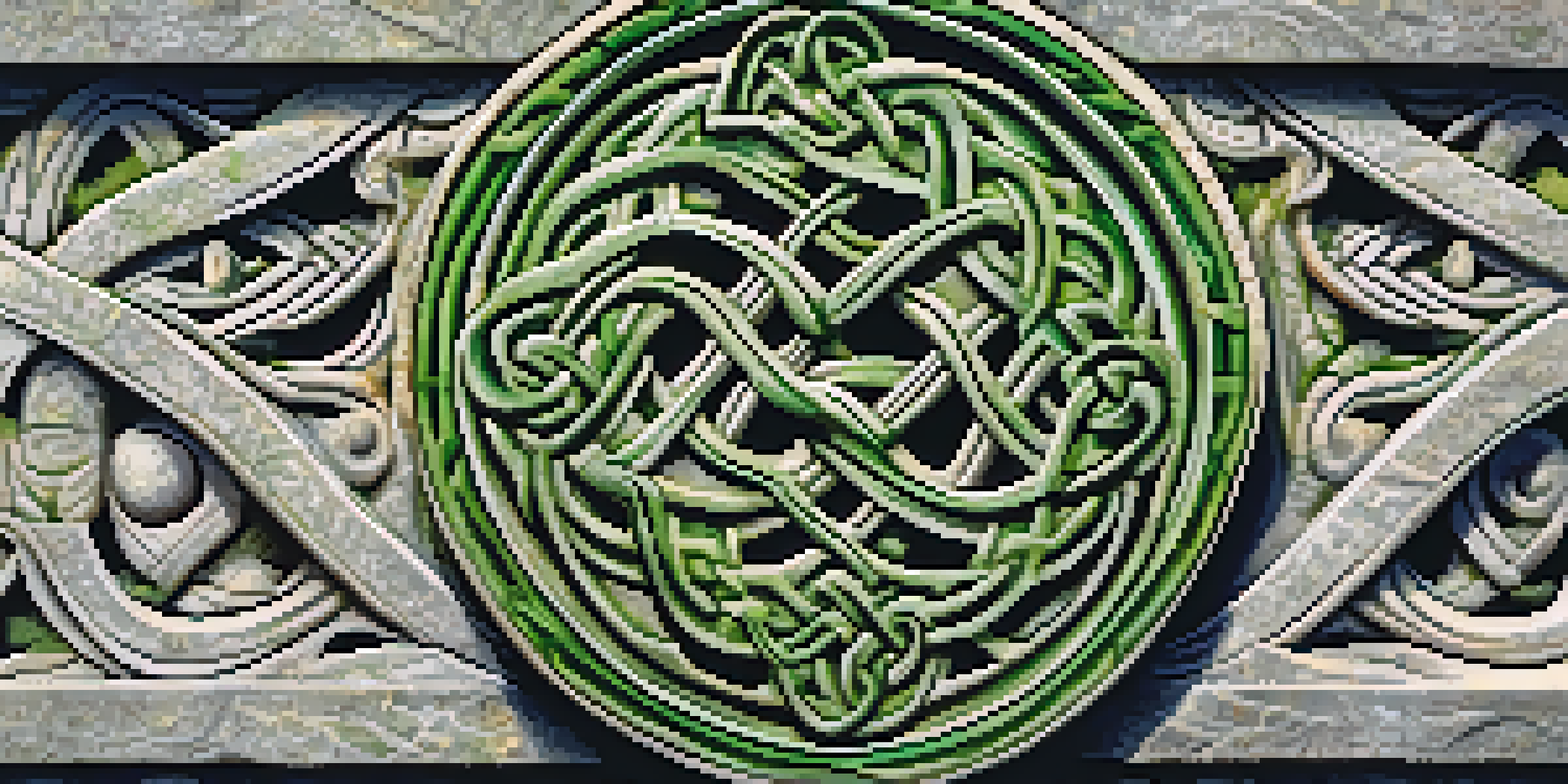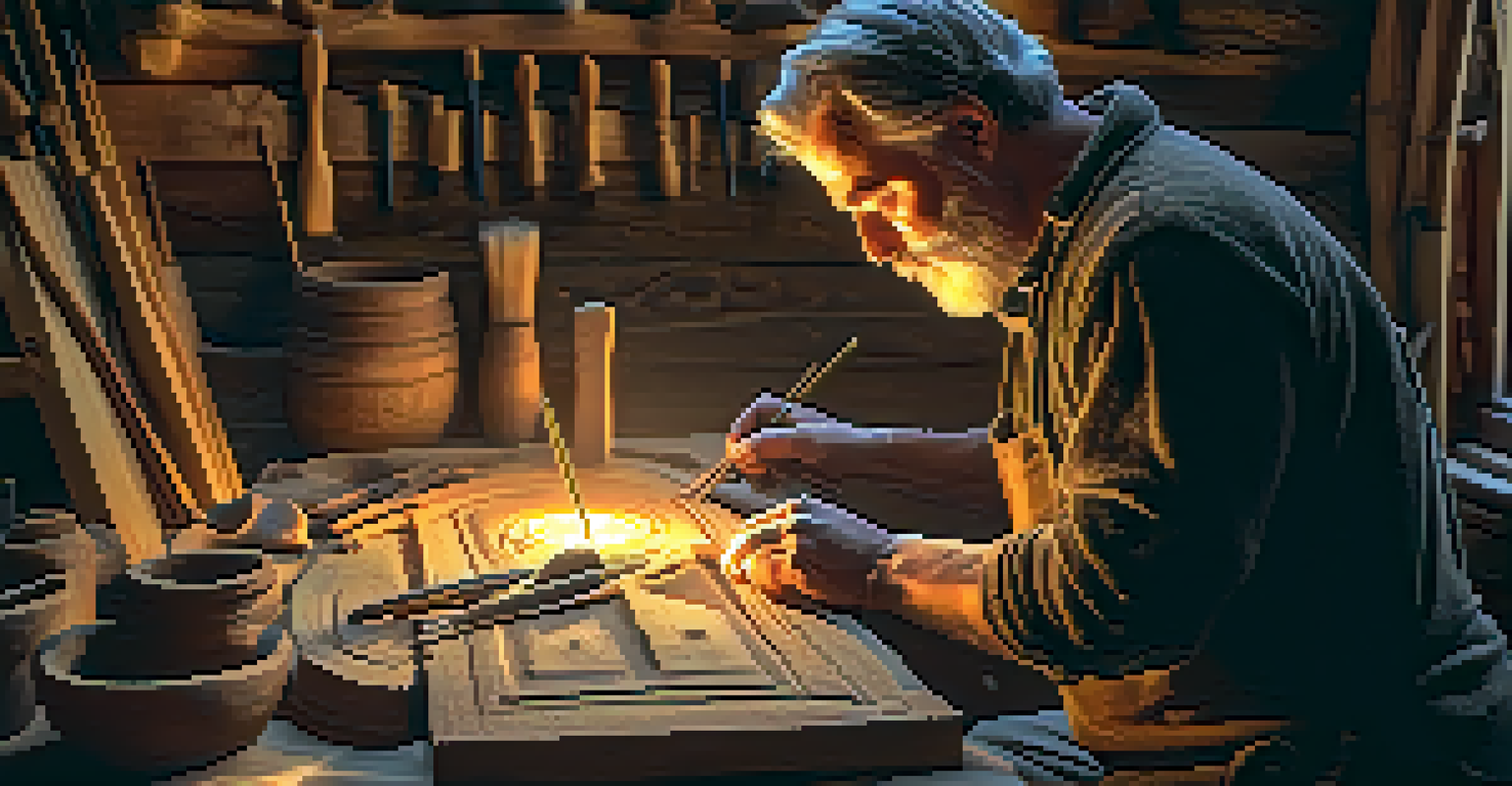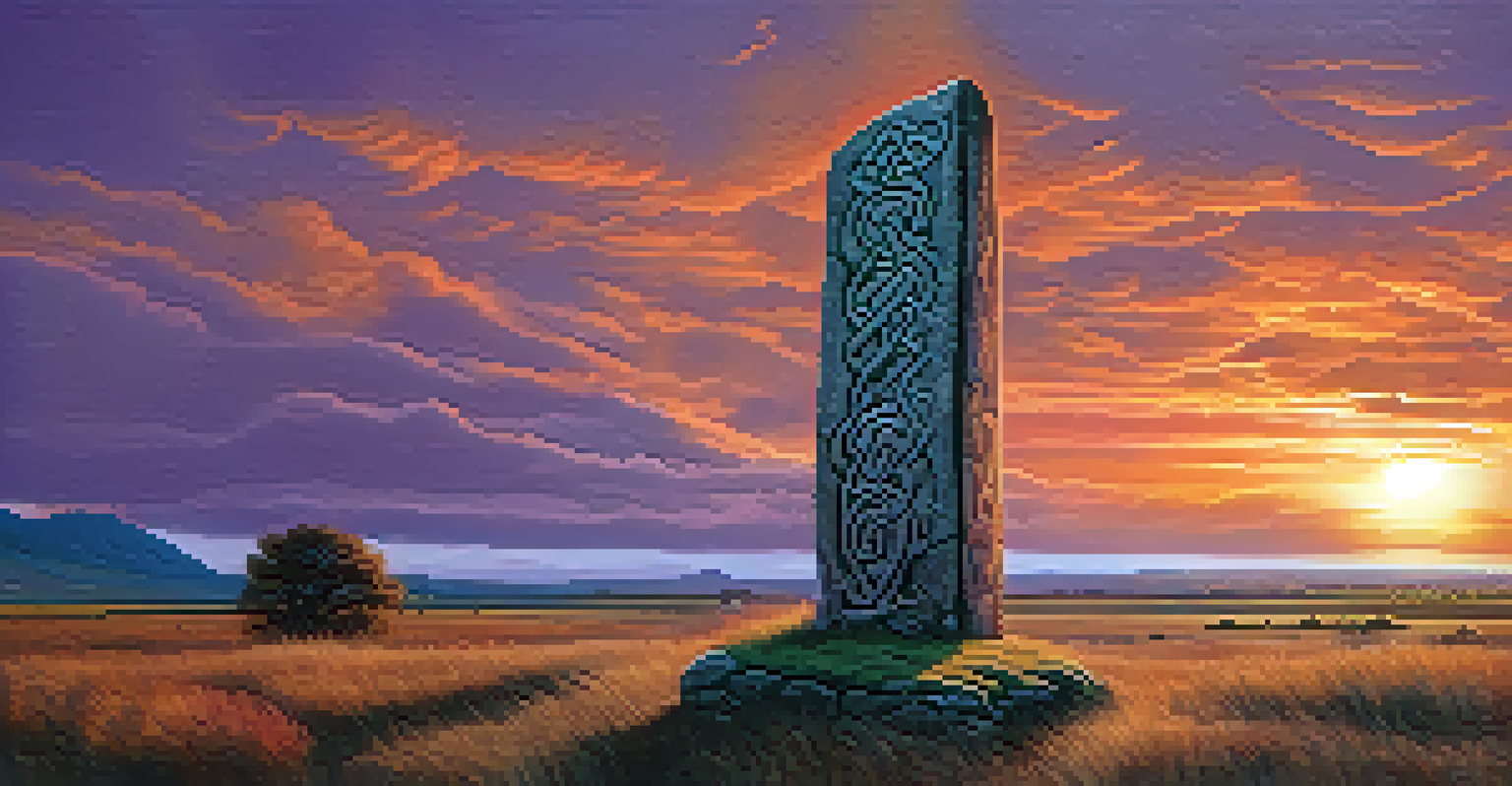Celtic Carving Techniques: Symbols and Designs Explained

Understanding the Rich History of Celtic Carving
Celtic carving has a deep-rooted history, tracing back to ancient tribes in Europe. These carvings often reflect the culture, beliefs, and environment of the Celtic people. From intricate stone monuments to delicate woodwork, each piece tells a story that connects us to a time long past.
Art is the most beautiful of all lies.
Historically, the Celts were known for their artistry, which was not just about aesthetics but also about symbolism. Many designs were imbued with spiritual significance or represented natural elements, showcasing their connection to the world around them. This blend of art and meaning is what makes Celtic carving truly unique.
As we explore these techniques, it's essential to appreciate the craftsmanship involved. Each carving required great skill, patience, and a deep understanding of the materials, making these artifacts not only beautiful but also a testament to the artisans' dedication.
Key Symbols in Celtic Carving and Their Meanings
Celtic carvings are often rich with symbolism, and understanding these symbols can deepen your appreciation of the art. For instance, the triskelion, a three-spiral motif, represents the concept of triplicity and is often associated with life, death, and rebirth. This symbol's recurring presence in Celtic art highlights the importance of cycles in nature.

Another significant symbol is the knot, which has no beginning or end, representing eternity and interconnectedness. These knots often appear in various forms, from simple designs to complex patterns, showcasing the skill of the carvers. The use of knots reflects a worldview that sees life as an intricate web of relationships.
Symbolism in Celtic Carving
Celtic carvings are rich with symbols like the triskelion and knots, representing life cycles and eternity.
Additionally, animals frequently feature in Celtic designs, each carrying its own symbolism. The raven, for example, is associated with transformation and prophecy, while the stag represents strength and purity. These animal motifs not only add beauty but also convey deeper meanings closely tied to Celtic beliefs.
Materials Used in Traditional Celtic Carving
Celtic carvers utilized a variety of materials, each chosen for its unique properties and significance. Stone was a primary medium, particularly in monumental works like standing stones and crosses, which were often carved from granite or sandstone due to their durability. This choice allowed these pieces to withstand the test of time, preserving their beauty and meaning for generations.
The past is never dead. It's not even past.
Wood was another popular material, with carvers creating everything from household items to intricate sculptures. The choice of wood often depended on availability, with oak and yew being favorites due to their strength and beauty. The natural grain of the wood also added an organic quality to the carvings, making each piece distinct.
In addition to stone and wood, metalwork played a significant role in Celtic carving. Items like brooches and jewelry were often intricately designed, showcasing the carver's expertise in working with materials like bronze and silver. These metal pieces were not only functional but also served as status symbols, reflecting the wearer's wealth and taste.
Techniques Employed in Celtic Carving
Celtic carvings are characterized by specific techniques that highlight the artisans' skills. One common method is incising, where designs are carved into the surface of the material, creating a raised effect. This technique allows for intricate detailing, making each piece visually captivating and unique.
Another technique is relief carving, where images are sculpted to stand out from the background, giving a three-dimensional effect. This method adds depth to the designs, enhancing the visual experience. The interplay of light and shadow on these carvings can create a mesmerizing effect, drawing the viewer in.
Materials and Techniques Used
Artisans employed materials such as stone, wood, and metal, using techniques like incising and relief carving to create intricate designs.
Lastly, the use of inlays is a technique that adds color and contrast to the carvings. By embedding different materials, such as colored stones or metals, artisans could create vibrant patterns that stand out against the base material. This practice not only enhanced the visual appeal but also showcased the carver's creativity and resourcefulness.
Celtic Patterns: Intricacies and Significance
One of the most distinctive features of Celtic carving is the use of patterns, which often interweave to create a sense of continuity and flow. These patterns, such as spirals, knots, and braids, are not just decorative—they carry significant meanings and reflect the Celts’ connection to nature and spirituality. Each twist and turn in the design invites viewers to explore deeper interpretations.
Spirals, for instance, are prevalent in Celtic art and can signify growth, expansion, and the journey of life. They create a dynamic sense of movement, visually representing the concept of evolution and the passage of time. This makes the spiral a powerful symbol in Celtic culture.
Knots, on the other hand, embody the idea of eternity and interconnectedness. Their intricate designs with no clear starting or ending point symbolize the unbreakable bonds in nature and relationships. These patterns remind us of the Celts' view of life as a continuous cycle, emphasizing their respect for the environment.
Modern Interpretations of Celtic Carving Techniques
Today, many artists continue to draw inspiration from traditional Celtic carving techniques, blending ancient methods with contemporary styles. This revival not only honors the rich heritage of Celtic art but also allows for personal expression in a modern context. Artists often incorporate traditional symbols and patterns into their work, creating pieces that resonate with both history and modernity.
The resurgence of interest in Celtic culture has also led to an increase in workshops and classes focused on these ancient techniques. Many artisans are eager to share their knowledge, ensuring that the skills of Celtic carving are passed down to future generations. This hands-on approach fosters a deeper understanding and appreciation for the craft.
Modern Revival of Celtic Art
Today's artists are blending traditional Celtic carving techniques with contemporary styles, ensuring the art form's legacy continues.
Moreover, technology plays a role in modern interpretations, with digital tools allowing for new forms of creativity. While traditional carving remains a revered craft, artists are exploring ways to combine it with modern technology, creating unique pieces that honor the past while embracing the future.
Preserving the Legacy of Celtic Carving
As we delve into the world of Celtic carving, it becomes clear that preserving this art form is essential. Many organizations and cultural institutions are dedicated to safeguarding these techniques and ensuring that the stories behind the carvings are not forgotten. By promoting awareness and education, they help keep the legacy alive.
Additionally, the conservation of historical sites and artifacts is crucial for maintaining the integrity of Celtic carving. Restoring ancient carvings and protecting significant locations ensures that future generations can experience and learn from these remarkable works of art. This preservation work is a collaborative effort involving historians, artisans, and the community.

Furthermore, engaging the public through exhibitions and workshops can spark interest in Celtic carving. By inviting people to interact with the art, they can cultivate a deeper appreciation for this beautiful tradition. Ultimately, the goal is to keep the spirit of Celtic carving thriving in today's world, celebrating its past while inspiring future creativity.